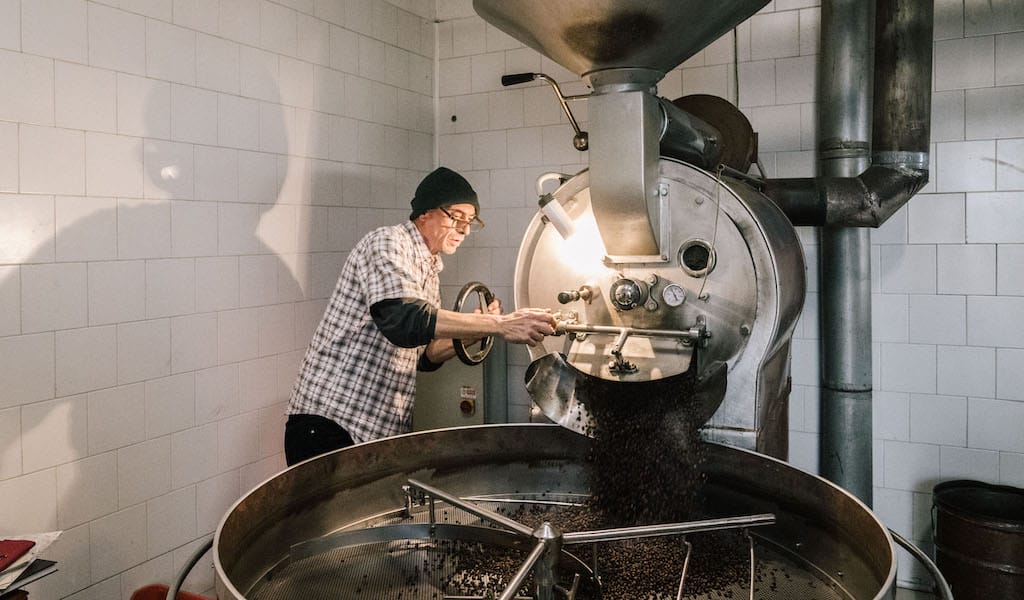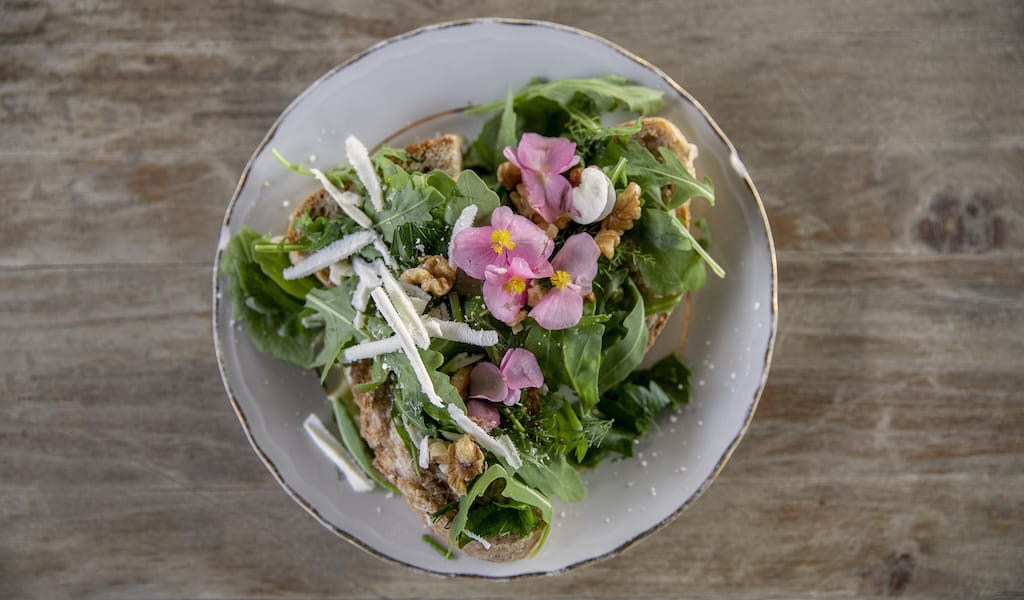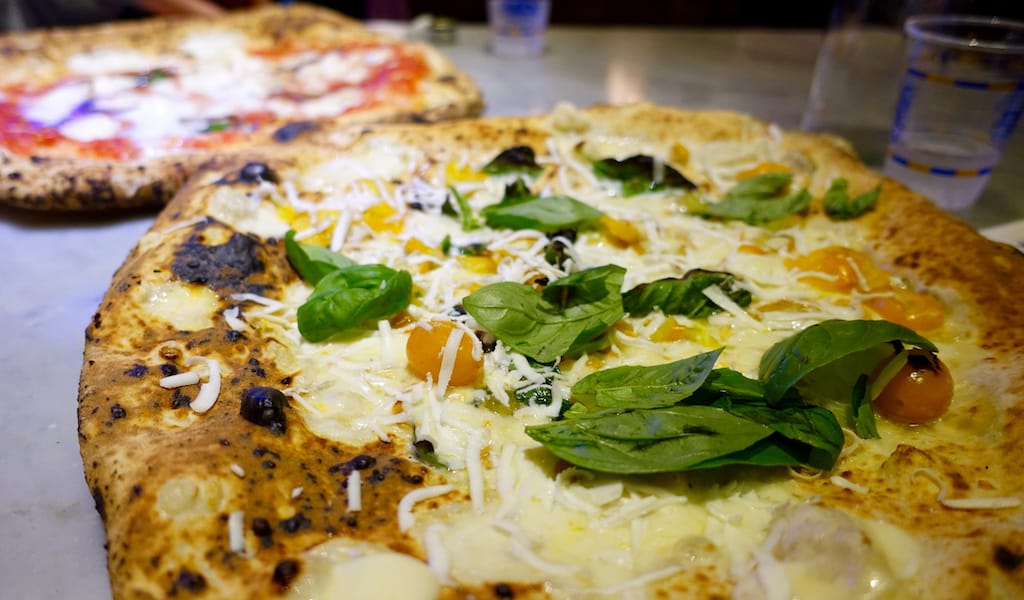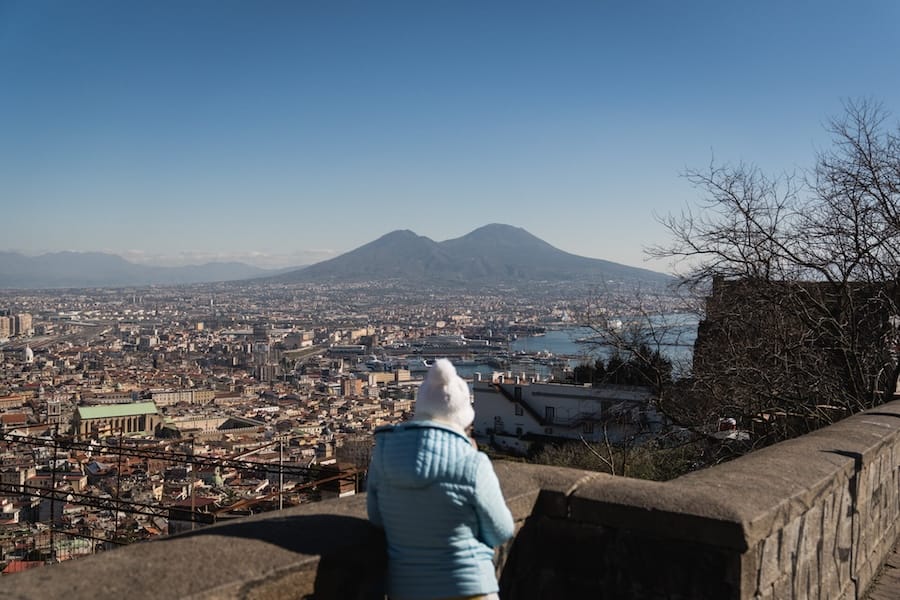The last wood-fired coffee roaster in all of southern Italy is located, appropriately, in Bacoli. This area of Campi Flegrei, the Phlegraean fields of Naples (from the Greek word flègo, which means “burn”) is a part of the Gulf of Pozzuoli known since Roman times for its active volcanoes. It is here that Nicola Scamardella is carrying on his family’s tradition of roasting coffee with a wood-burning machine.
Nicola is known in Bacoli as the son of Pasquale Scamardella, a man whose nickname was Pasquale della Torrefazione (“of the roastery”). In the 1960s, Pasquale and his wife Delia were working for a commercial coffee roaster in Naples. During this time, Naples was filled with coffee roasters – in this port city, there was a wide availability of different varieties of coffee from every corner of the world. Combined with the competence of the Neapolitan artisans, it was a great time for coffee in the city and delicious blends were born.

In 1963, the couple decided to open a bar with an adjoining roastery called “Caffè do Peru” in Bacoli, their hometown. At the end of the 20th century, Nicola and his sister Maria took over the shop, giving it a new name: Caffè Delizia.
Nicola met his partner, Chiara, in 2011. Half Venetian and half Neapolitan, Chiara arrived in Bacoli and fell in love with both Nicola and the business. She had previously worked in graphics and communication, but decided to help Nicola and Maria with the management of the roastery. She brought new life to the shop, stocking it with more and more new products – all kinds of sweets, chocolates, spices and sugared almonds from all over Italy –transforming it into what is known as a “coloniali”. The word coloniali was born during the Fascist period, with Mussolini’s ambitions of conquering the “colonies” in North Africa. The shops that sold products from the Italian colonies – spices, bananas, and other “exotic” products – were called coloniali, a term that remains in use to this day (despite its complicated origins).
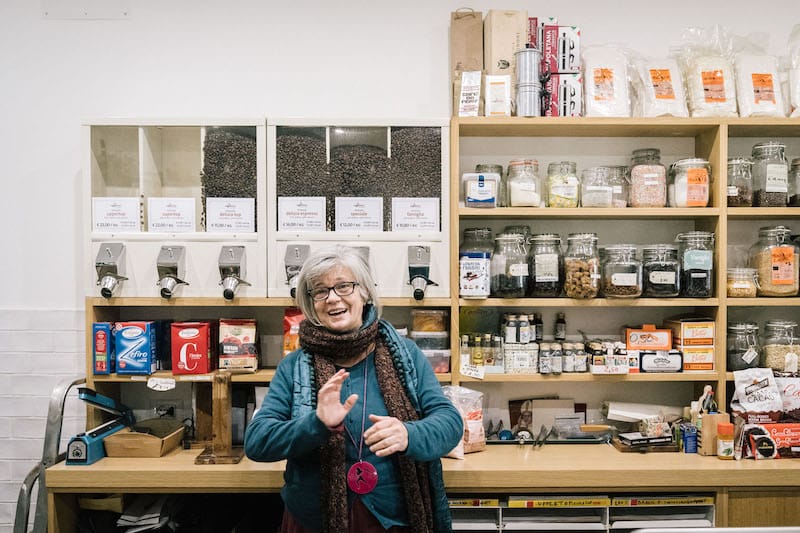
“My mom’s aunt had the best coloniali shop in Venice,” Chiara, now 63, tells us as she prepares the first coffee of the day. “That’s why I’ve always had the dream of having a real coloniali shop. It’s in my blood.” She stocks organic natural products, such as cereals, rice, licorice, chocolates and other sweets, and imported spices like mustard, cumin, ginger and turmeric. One of the products Delizia is best known for is its black pepper of extraordinary quality, hand-selected by Chiara. She also enjoys making homemade sweets and biscuits that she offers to all the customers before their coffee. “Today there is a hazelnut cake or a caprese cake with coffee,” she invites us to taste them.
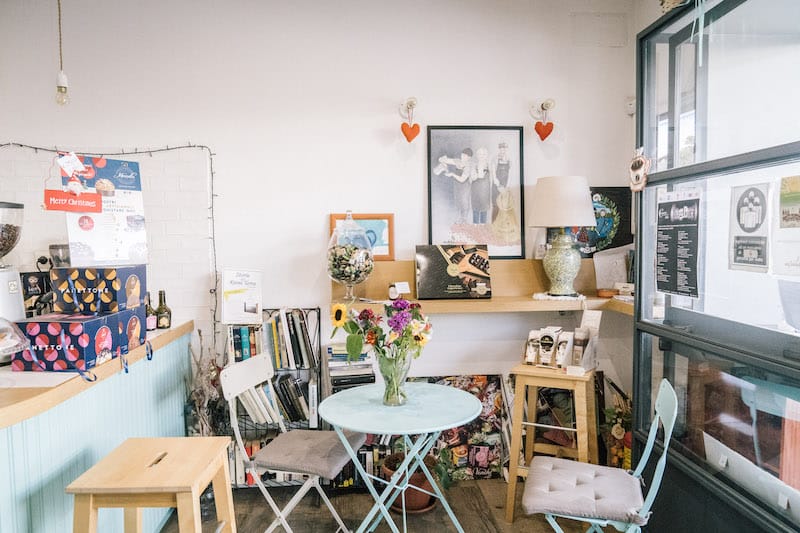
We sip our cups with a soundtrack of rock music in the background – Nicola is a great lover of music and there is always a quality playlist on in the shop. The two sisters-in-law, Chiara and Maria, share their adoration for Nicola, and therefore gladly accept his music.
Inside Caffè Delizia are only two tables, but there is a huge assortment of books to choose from and read while you enjoy your coffee. The first coffee we try is a blend called “Family,” and Chiara explains that “it is made with 50 percent Arabica quality beans and 50 percent Robusta beans.”
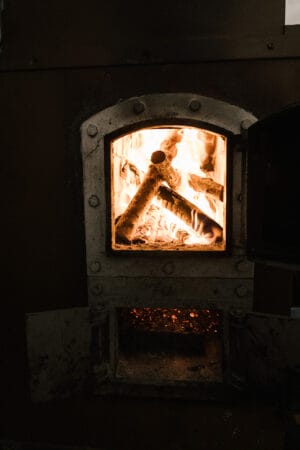
We head into the adjoining room with Nicola, where the coffee is roasted. The machine has reached 200 degrees and is finally ready to accommodate the first load of coffee. Not just any wood can be used to roast Caffè Delizia’s coffee, explains Nicola: “The wood must be very clean, and it must be oak from Campi Flegrei. “This summer, I accidentally used wood from an orange tree and it was a disaster. I am sure that the wood [contributes to] the coffee’s essence and aroma…and here, it is all a matter of aroma.”
Today, Nicola is roasting the half-and-half blend of Robusta and Arabica. He opens the tap and the raw coffee falls into the hopper, in precisely measured quantities and proportions. Nicola continuously checks the cooking level of the coffee and when he believes, by checking the color and tasting it, that the coffee is perfectly at the right point, he quickly opens the machine to quickly cool the coffee and prevent it from continuing to roast. The whole process is an ancient art learned from his father, which Nicola still follows to this day, repeating the same precise and punctual gestures.
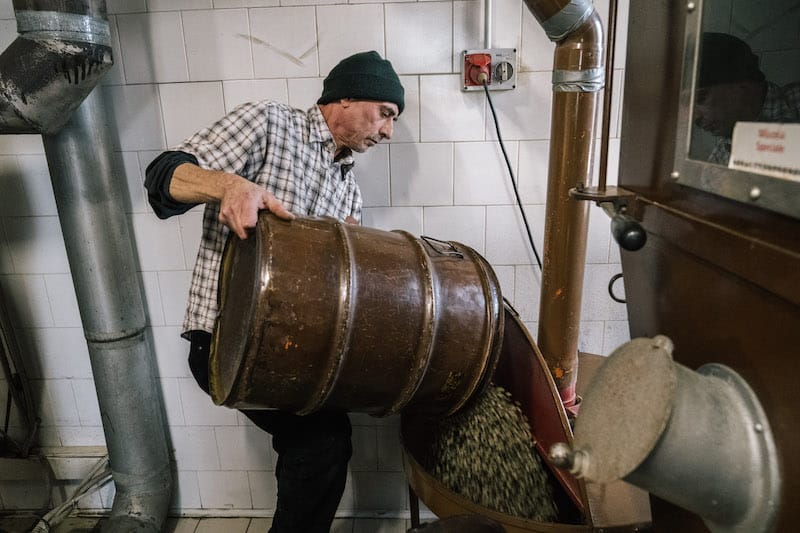
True coffee lovers often choose Delizia’s 100 percent Arabica blend. It is prepared with two different toasting levels: a strong blonde and a darker roast. For those in search of a lower-price coffee, Delizia prepares six other classic blends. The most famous are the Delizia Top Blend (70 percent Robusta and 30 percent Arabica) and the Famiglia blend we tried.
Sara, a 35-year-old customer, tells us, “This is the only coffee I drink bitter, without adding sugar, I can smell the taste, the smell of real coffee.” Chiara proudly replies: “We make a coffee that simply tastes like coffee – never burnt.”
Like Sara, we keep coming back to Caffè Delizia for great people, great coffee, great desserts and above all, to witness Nicola’s roasting process, a truly impressive show. Coffee as it was made a hundred years ago, with ancient techniques, long roasting times, and the clean wood – and incomparable aroma – of the oaks of the Phlegraean fields.
Quick guide to coffee quality
– The two main varieties of coffee bean are Arabica and Robusta.
– Arabica is the finest quality. It is aromatic and fragrant, it is more delicate than robusta.
– Robusta is the most produced coffee variety in the world after Arabica. It is often considered to be of inferior quality to Arabica, but it is a question of tastes.
– Arabica beans are more elongated, oval, while Robusta beans have a more rounded shape and a straighter central groove.
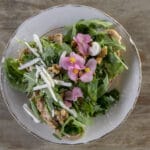 April 28, 2022 CB On the Road
April 28, 2022 CB On the Road
In the tiny Italian town of Cuccaro Vetere, some 150 kilometers south of Naples, […] Posted in Naples August 10, 2018 CB Book Club
August 10, 2018 CB Book Club
We recently spoke to author Elizabeth Minchilli about her new book, Eating My Way […] Posted in Naples February 14, 2024 High and Low: A Taste of Two Napolis
February 14, 2024 High and Low: A Taste of Two Napolis
Quick bite: On this culinary tour of central Naples, we’ll go off the beaten path by […] Posted in Naples
Published on June 09, 2022
Related stories
April 28, 2022
Naples | By Alessio Paduano
NaplesIn the tiny Italian town of Cuccaro Vetere, some 150 kilometers south of Naples, villagers are surrounded by nature and an incredible variety of local fruits. The town, which is in Campania’s province of Salerno, has just over 500 inhabitants, and – even more than their nature’s bounty – these residents are known for one…
August 10, 2018
Naples | By Culinary Backstreets
NaplesWe recently spoke to author Elizabeth Minchilli about her new book, Eating My Way Through Italy (St. Martin’s Griffin; May 2018). After a lifetime of living and eating in Rome, Minchilli is an expert on the city’s cuisine, as evidenced by her popular blog, her Eat Italy app and her book Eating Rome: Living the…
February 14, 2024
Naples | By Culinary Backstreets
NaplesQuick bite: On this culinary tour of central Naples, we’ll go off the beaten path by visiting two wildly contrasting neighborhoods, Vomero and the Spanish Quarter. In both we’ll stop into the places – from artisanal producers to street food vendors and more – that locals go to for the quintessential taste of the city,…







































